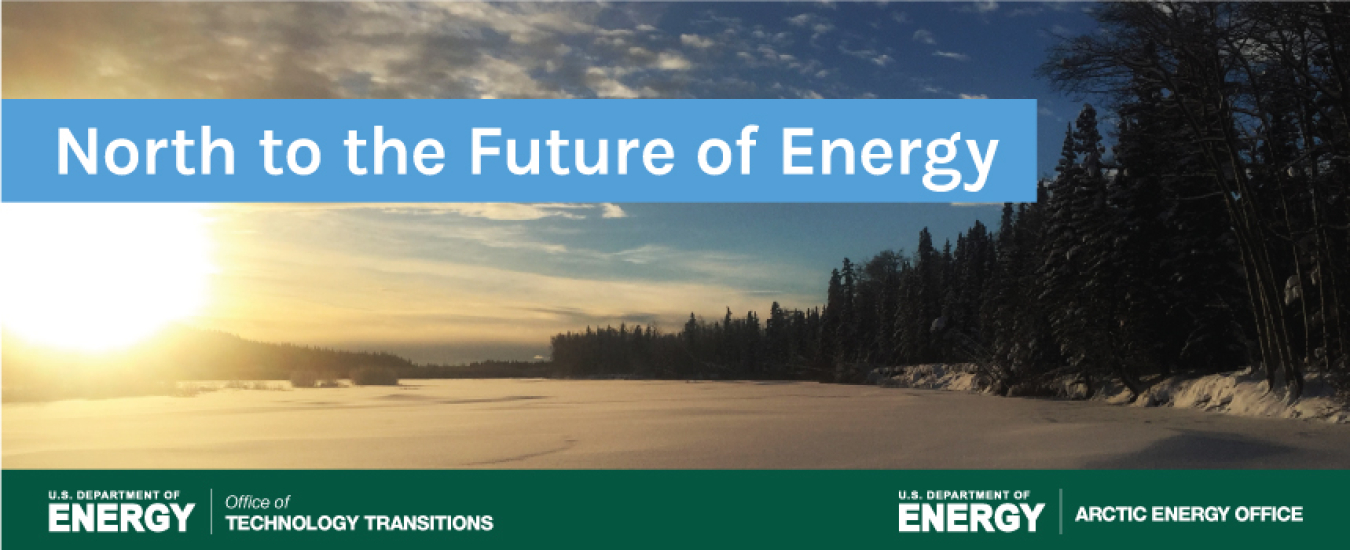
Series Gathers Arctic Stakeholders To Explore Challenges and Opportunities on the Energy Transition Front
Although the Arctic makes up about a fifth of the world’s landmass, discussions at the intersection of climate change and energy development have tended to overlook the region. As a result, efforts to mitigate environmental, economic, and geopolitical risks have largely ignored the Arctic’s vast, untapped potential to serve as a living laboratory for clean energy technology innovation and commercialization.
“If we want to deploy, deploy, deploy all these solutions at scale, we have to speed commercialization.”
—Energy Secretary Jennifer Granholm
ArcticX addresses this head on by shining a spotlight on the region. Co-hosted by the U.S. Department of Energy (DOE) Office of Technology Transitions (OTT) and Arctic Energy Office (AEO), this ongoing series of events invites industry entrepreneurs, lab researchers, and government leaders to head north to the future of energy.
Along with showcasing U.S. leadership in energy innovation and commercialization, the series presents an opportunity to learn from and leverage the resilience and resourcefulness that define the traditionally underserved but strategically important Arctic region.
Inhabitants of the Arctic have long relied on ingenuity to thrive in a harsh environment that has challenged and sustained them for generations. ArcticX shines a light on these Arctic innovators, especially Alaska Native communities. It amplifies Alaskan voices by providing a platform for a diverse group of Arctic stakeholders to learn, talk, and think about Arctic energy technology deployment challenges and opportunities.
If you’ve missed any of the webinars in the ArcticX series, it’s not too late to catch up on the highlights and join the conversation. Below is a recap of the virtual events.
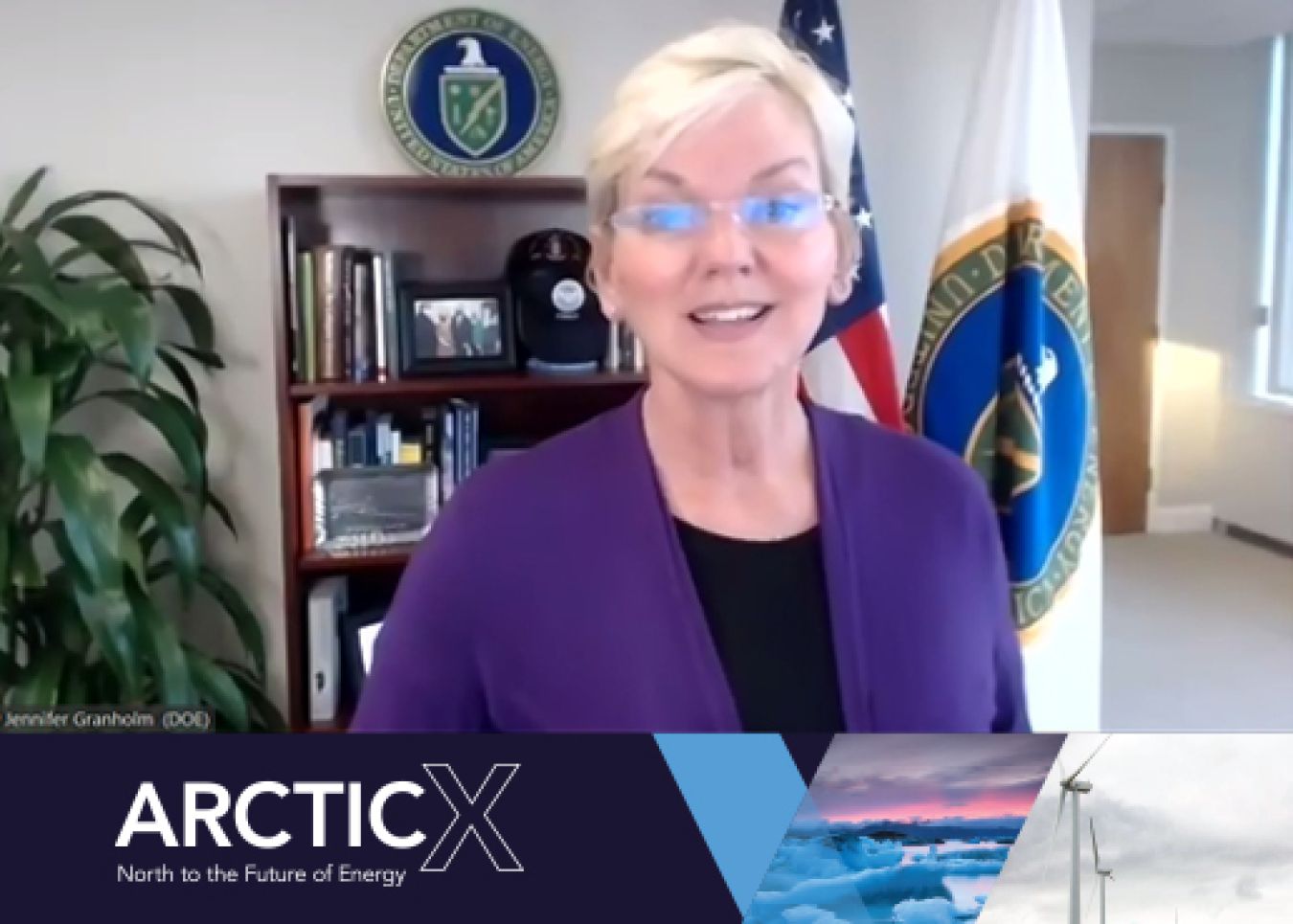
The ArcticX kickoff event took place virtually Nov. 17, 2021, with Secretary of Energy Jennifer Granholm.
In Secretary Granholm's remarks, she recalled seeing firsthand how Alaska is “both ground zero for climate change and a pioneer for the nation’s clean energy future.” Despite estimates that those climate impacts will cost residents upwards of $6.1 billion by 2030, Granholm expressed optimism about Alaska’s energy future, noting that “in the far north, challenge has always come with opportunity.”
As examples, the secretary pointed to the Native Village of Igiugig’s hydrokinetic power system, installed in partnership with DOE, and the work Cold Climate Housing Research Center researcher Robby Strunk is doing to make homes more climate resilient in his Native Village of Quinhagak.
“If we want to deploy, deploy, deploy all these solutions at scale, we have to speed commercialization,” she said. “And that, of course, is where ArcticX comes in.”
Other webinar highlights included:
- A welcome video from U.S. Department of the Interior (DOI) Secretary Deb Haaland and a Q&A session with Deputy Secretary of Energy David Turk
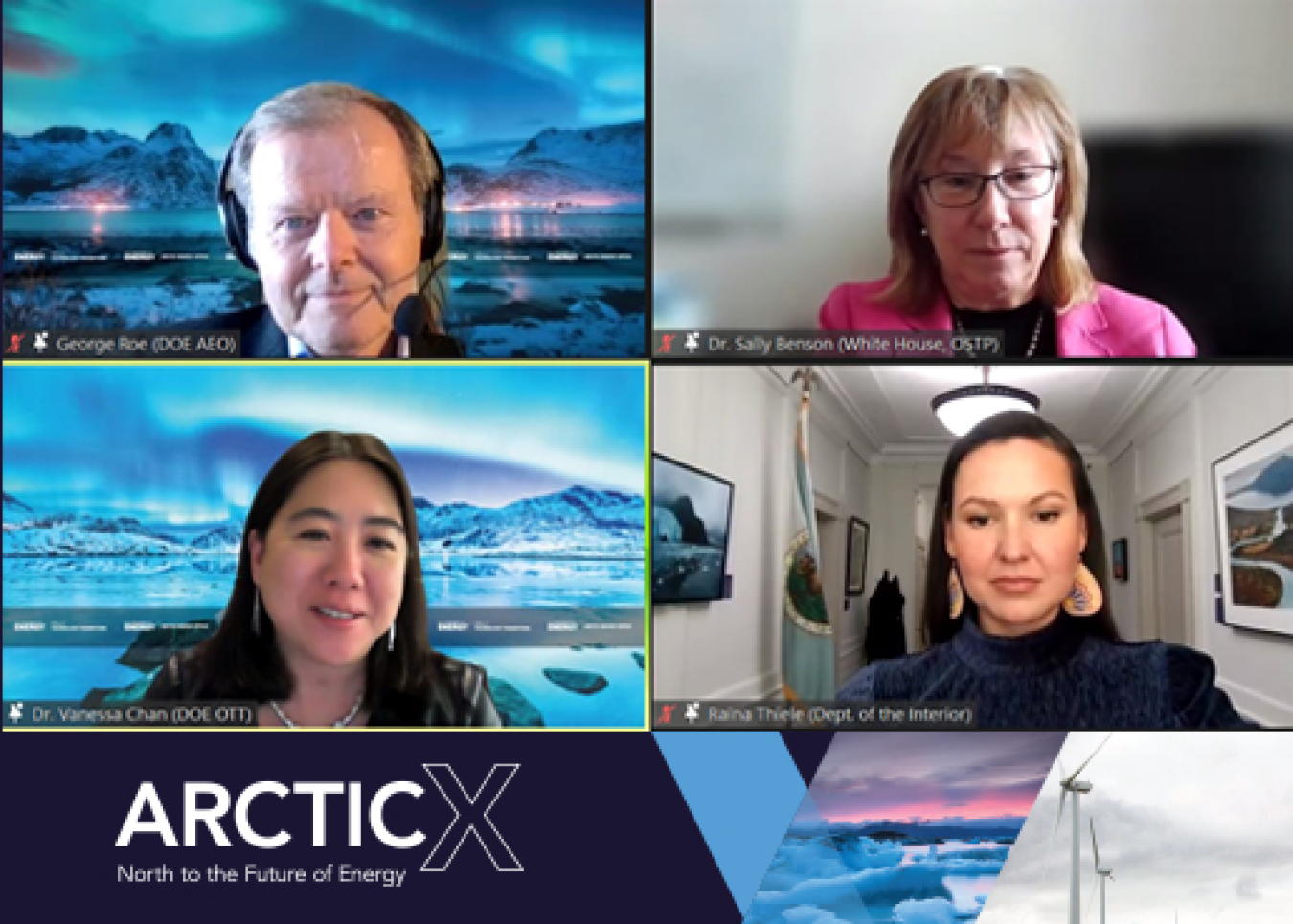
- A panel discussion, moderated by Arctic Energy Office Interim Director George Roe, on challenges and opportunities in the Arctic, featuring:
- Dr. Vanessa Chan, DOE Chief Commercialization Officer and OTT Director, on why OTT decided to focus InnovationXLab on an entire region, instead of showcasing specific emerging technologies, as well as how OTT programs support innovation ecosystems and energy development, and help address rural energy poverty in Alaska
- Raina Thiele, DOI Arctic Advisor, on how her Alaska Native heritage and experience growing up in rural Alaska shaped her perspective, and how DOE is working to ensure coastal communities that must relocate due to climate-change impacts can not only rebuild but build back better
- Sally Benson, White House Office of Science and Technology Policy Deputy Director for Energy and Chief Strategist for the Energy Transitions, on the role Alaska can play in implementing the $21.5 billion investment in energy technology demonstration and research hubs enabled by the Bipartisan Infrastructure Law (BIL)
- A wrap-up delivered by Dr. Chan with a focus on next steps.
“This is a journey. We're on it for a long time, and we've got to go together.”
—George Roe, Interim Director, Arctic Energy Office
Energy Justice in the Arctic
The second ArcticX webinar, on Jan. 26, 2022, considered how to ensure energy and environmental justice in the Arctic while securing a sustainable energy future for the region.
Roe recapped the themes in his remarks, including the importance of shifting the dialogue from “stakeholders” to “partnerships” and being aware of what local people value. He also stressed that we must broaden the conversations to include heat and transportation as well as electricity while considering the barriers to technology deployment before deploying.
Other highlights included:
- Opening remarks from Dr. Geraldine Richmond, Under Secretary for Science and Energy, and a welcome video from Shalanda Baker, Deputy Director for Energy Justice at DOE’s Office of Economic Impact and Diversity
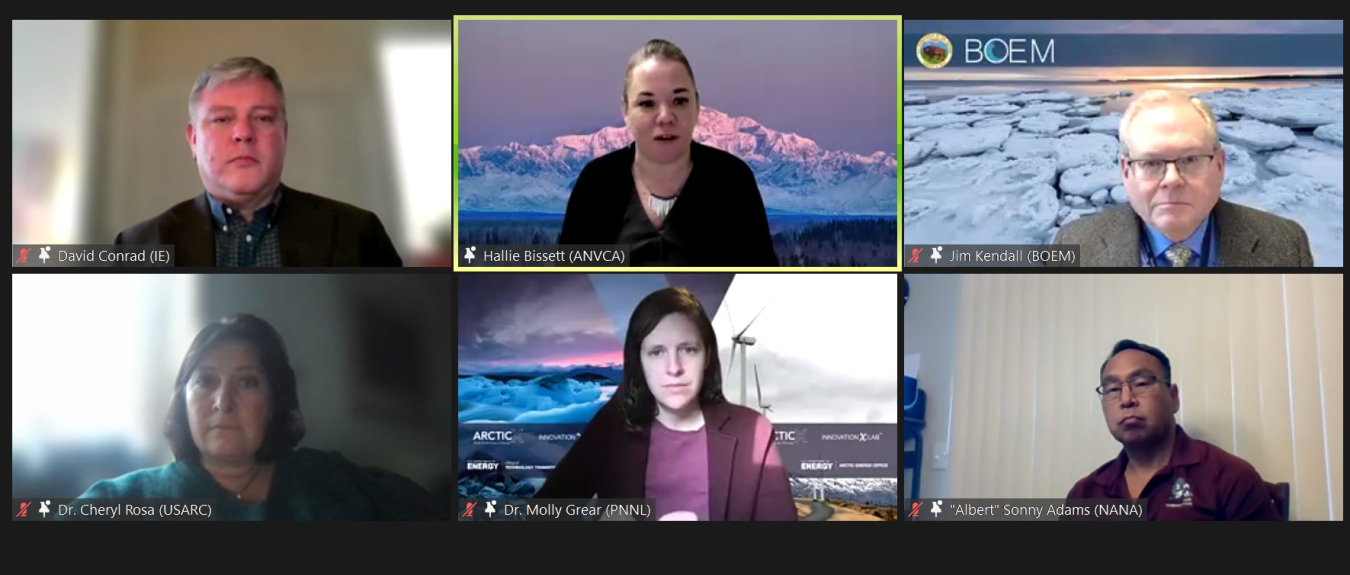
- A panel discussion and Q&A session, moderated by David Conrad, deputy director of the Office of Indian Energy Policy and Programs, featuring:
- Hallie Bissett, Alaska Native Village Corporation Association Executive Director, on the disconnect between the significant economic benefits the state and the nation receive from extracting abundant energy resources on Alaska Native lands, and the challenges Alaska Native villages face not only paying energy costs three to five times the national average but also deploying energy projects aimed at lowering them
- Dr. Molly Grear, Ocean Engineer & Marine Biologist, Pacific Northwest National Laboratory, on the importance of ensuring emerging technologies and DOE programs, such as Powering the Blue Economy and the Energy Transitions Initiative Partnership Project, address Alaska’s significant energy challenges in ways that align with local needs, values, and priorities
- Dr. James Kendall, Regional Director, Bureau of Ocean Energy Management's Alaska Regional Office, highlighting a paradigm shift toward treating science and Indigenous knowledge as independent but comparable knowledge systems in energy and environmental analysis and decision making, coupled with engaging Arctic communities as partners instead of stakeholders
- Dr. Cheryl Rosa, Deputy Director, U.S. Arctic Research Commission, with suggestions from a research perspective on creating a transparent and inclusive deployment process as energy technologies and strategies are being developed to improve energy security in the remote Arctic
- Sonny Adams, Director of Alternative Energy, NANA Regional Corporation, presenting a case study on enhancing energy security in the Alaska Native Villages of Deering, Buckland, and Kotzebue through DOE-funded microgrid projects, as well as ideas for addressing the considerable hurdles to replicating these strategies in other Alaska Native villages
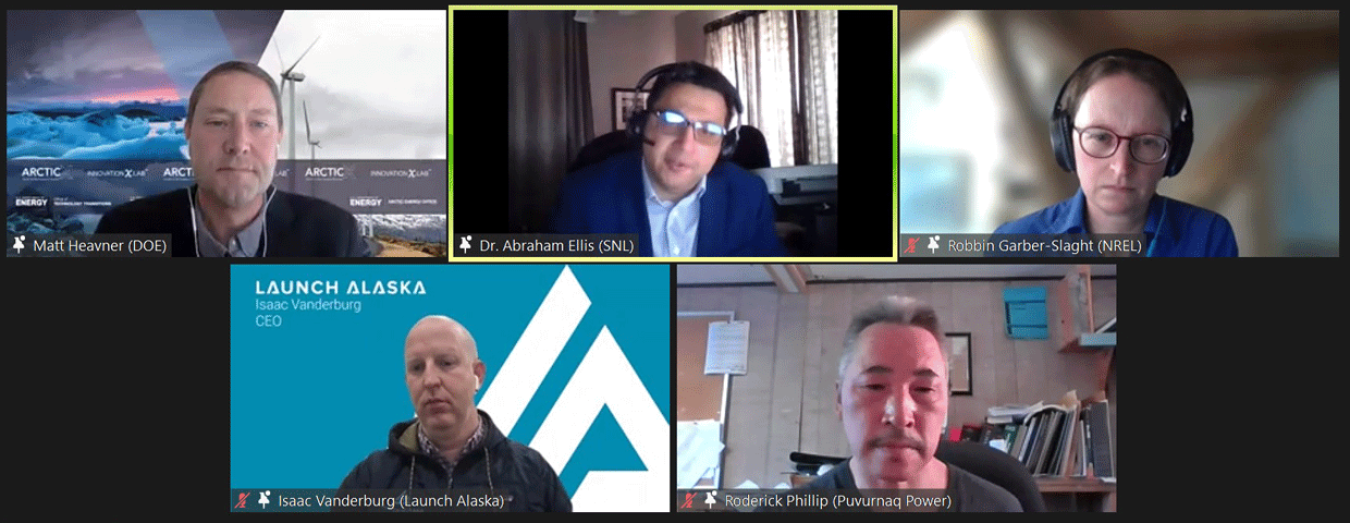
- A panel discussion, moderated by AEO Senior Advisor Dr. Matt Heavner, on the role of emerging technology in Arctic energy justice, featuring:
- Abraham Ellis, Senior Manager Renewable Energy Technologies, Sandia National Laboratories, who shared lessons learned from energy transitions in Dillingham, Alaska, and Culebra, Puerto Rico, including the importance of integrating social burden and equity metrics when developing and using tools to inform energy decisions and optimize energy investments
- Robbin Garber-Slaght, Engineer, Cold Climate Housing Research Center, University of Alaska Fairbanks, on looking to weatherization as a model for deploying emerging technologies in the Arctic with a focus on the process
- Roderick Phillip, Manager, Puvurnaq Power, with a success story from the Native Village Kongiganak, whose community microgrid combines wind turbines, diesel generators, and a thermal stove battery bank to displace roughly 50,000 gallons of diesel fuel use and avoid some 537 tons of CO2 emissions annually, saving the community millions in energy costs
- Isaac Vanderburg, Launch Alaska CEO, sharing thoughts on how an aerospace innovation center at Merrill Field in Anchorage might become an innovation hub in collaboration with—and to the benefit of—historically underserved surrounding communities Fairview and Mountain View
- An open discussion on energy justice in the Arctic, facilitated by AEO Senior Advisor Givey Kochanowski, in which panelists addressed questions posed by attendees in the chat.
"This is a journey," Roe said in closing. “We're on it for a long time, and we've got to go together—and part of what we have to do is include the youth of today and the youth of tomorrow in that.”
Doing Business with DOE in the Arctic
The next leg of the journey, on April 6, focused on advancing business initiatives in the region and DOE programs supporting the Arctic’s energy transition. More than 200 people tuned in for the third and final ArcticX webinar, focused on funding and engagement opportunities that can facilitate innovative energy solutions to support economic development and sustainability in the Arctic.
“We strongly believe that by giving voice and opportunity to the people of the Arctic and Alaska, we should be, and we will be, at the forefront of innovation and sustainability,” said OTT Deputy Chief of Staff Jared Bierbach in his opening remarks before passing the baton to OTT Chief of Staff Mary Yamada. Yamada moderated the first panel, featuring:
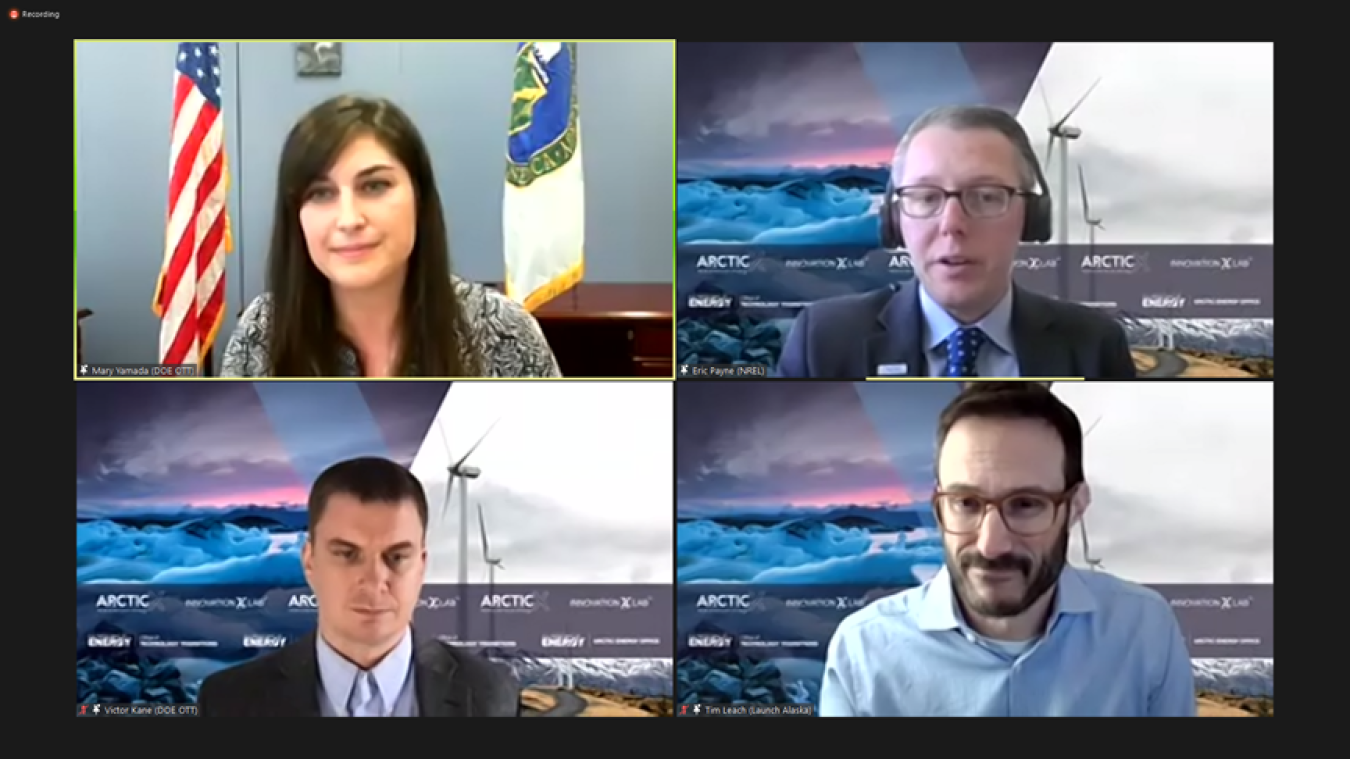
- Victor Kane, team lead for OTT’s Commercialization Programs, who touted the increase in funding available for energy projects under BIL and the breadth of funding opportunities available for technology commercialization and deployment across DOE, including OTT’s EnergyTech University Prize and Technology Commercialization Fund, which creates opportunities for local industry to partner with national laboratories
- Tim Leach, transportation lead for Launch Alaska, who discussed how energy leadership, harsh environment, geographic diversity, and high energy costs uniquely position Alaska to serve as a proving ground for solutions like vehicle electrification with potential to bolster climate resilience locally as well as globally
- Eric Payne, senior licensing executive at the National Renewable Energy Laboratory, who pointed to the potential for tapping Alaska’s rich wind and marine energy resources to promote local economic development in traditionally underserved communities statewide.
Roe moderated the second panel, featuring:
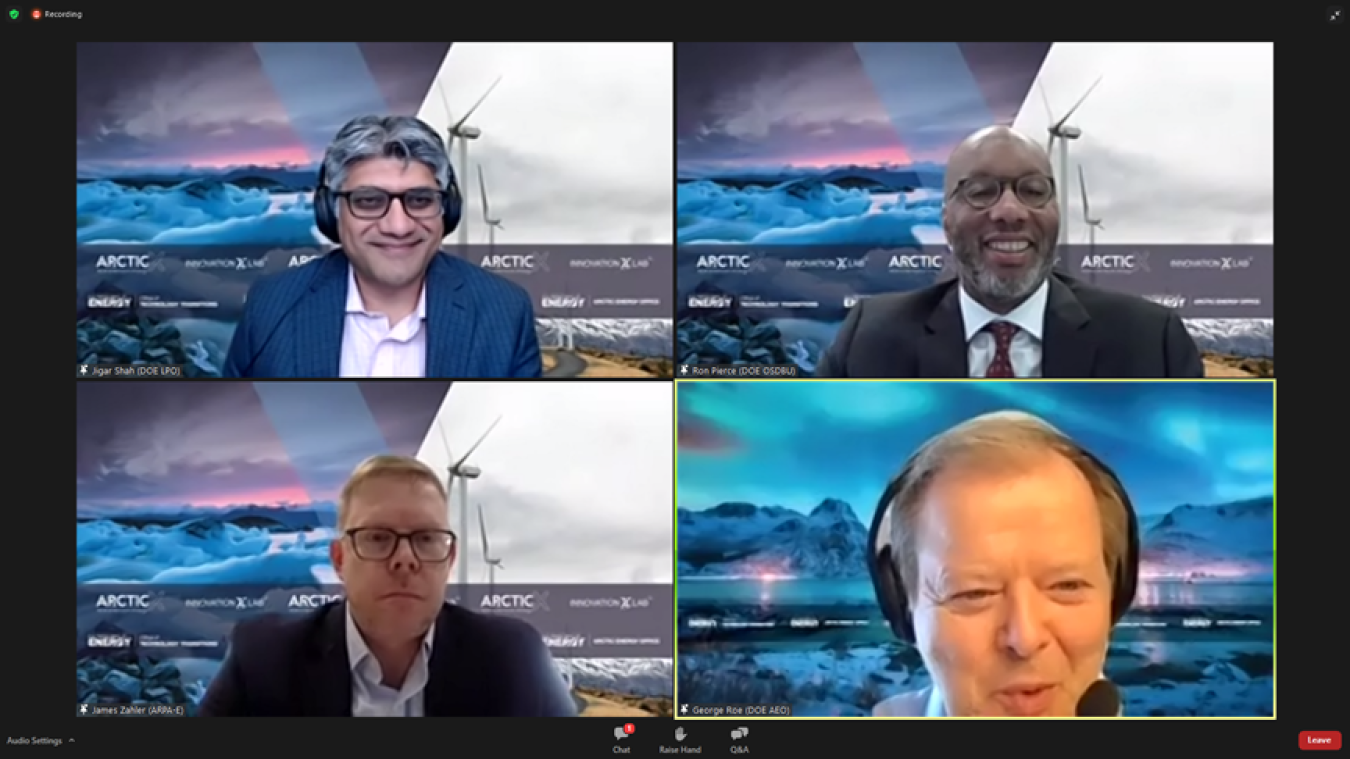
- Ron Pierce, director of the Office of Small and Disadvantaged Business Utilization (OSDBU), on how OSDBU assists and advocates for small businesses interested in doing business with DOE through, for example, regional acquisition forecasting and capability statement support
- Jigar Shah, director of DOE’s Loan Programs Office (LPO), on how BIL changes address key barriers to financing projects in the Arctic by allowing LPO to pool projects, creating economies of scale and thereby expanding its ability to support regional efforts to deploy energy technology solutions at scale
- Dr. James Zahler, associate director for technology-to-market at the Advanced Research Project Agency Energy (ARPA-E), on how ARPA-E works to move bleeding-edge technologies from concept to market.
“We have so much that we can learn from [Alaska’s] incredible communities that are, by definition, innovative, given how they thrive in one of the harshest climates on our planet.”
—Dr. Vanessa Chan, DOE Chief Commercialization Officer and Director of OTT
North To the Future! Join Us in Anchorage May 23
After thanking all of the organizers, panelists, and attendees, Roe closed the final ArcticX webinar by inviting all to head North to the Future of Energy next month, when ArcticX culminates with an in-person InnovationXLab in Anchorage.
The May 23 summit will be a unique opportunity to solidify ideas and partnerships forged through the series. As Dr. Chan noted in wrapping up the kickoff event in November, “We have so much that we can learn from [Alaska’s] incredible communities that are, by definition, innovative, given how they thrive in one of the harshest climates on our planet.”
